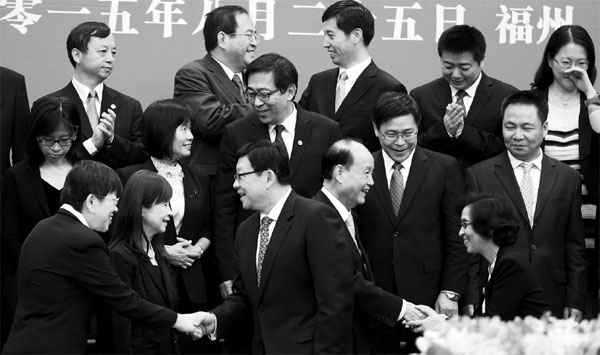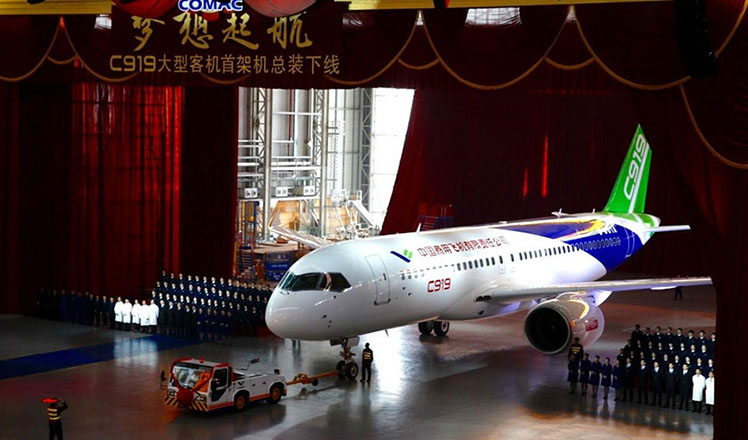Building a future on mutual understanding
Updated: 2015-11-03 08:15
By He Na and Hu Meidong(China Daily)
|
||||||||
The relationship between the Chinese mainland and Taiwan has been improving steadily for six decades, but negotiations have often been long and arduous, as He Na and Hu Meidong report from Fuzhou, Fujian province
Although a mere 2,500 people live in Zhongchuan, a village in Longyan, Fujian province, is proud to be the ancestral home of more than 15,000 overseas Chinese.
Moreover, as Xiamen's ports have become some of the best-known points of departure from the Chinese mainland, Zhongchuan has become famous as a "talent nursery" that has sent politicians, entrepreneurs and artists to a large number of countries and regions - especially Taiwan, just 316 kilometers away.
|
Chen Deming (center left), president of the Association for Relations across the Taiwan Straits, based on the Chinese mainland, and Lin Join-sane (center right), chairman of the Straits Exchange Foundation, from Taiwan, greet partipants at a meeting to celebrate the signing of agreements on aviation safety and the avoidance of dual taxation. Hu Meidong / China Daily |
|
The manager of a tea company from Taiwan serves visitors to the Eighth Cross-Straits Tea Expo in Wuyishan, Fujian province, in November 2014. The expo attracted more than 600 enterprises from China and overseas, including more than 100 businesses from Taiwan. Zhang Guojun / Xinhua |
|
Tourists enjoy a view of Taipei from the 101 Tower, the tallest building in the city, in July. The number of visitors from the Chinese mainland to Taiwan is rising rapidly. Du Lianyi / China Daily |
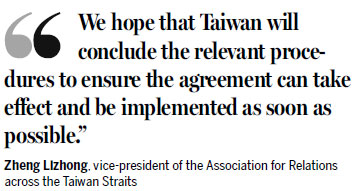
'Balloon link'
The people of Zhongchuan have witnessed many changes in cross-Straits relations over the past six decades.
"When I was young, one of my favorite things was picking up candy, biscuits, pencils and colorful pamphlets that fell from balloons that floated across the Taiwan Straits before exploding and releasing their contents," Hu Meihua, a Zhongchuan native, said.
The 50-something entrepreneur said the pamphlets contained color photos depicting the comfortable lives of Taiwan residents and the exotic foods they enjoyed, plus portraits of Sun Yat-sen, the founder of the Kuomintang.
"Those photos impressed me a lot as a child, and I vowed to visit Taiwan when I grew up," Hu said, recalling the "Balloon Link" propaganda campaign that started more than four decades ago and was designed to cast doubts in the minds of mainland residents.
Hard-won progress
Although the campaign's effect was limited, the pamphlets were the only impression many coastal people, especially children, had of Taiwan.
Recent years have seen improvements and developments in cross-Straits relations. Data from the State Council's Taiwan Affairs Office show that more than 9.4 million people traveled between the mainland and Taiwan last year, and there were 840 scheduled cross-Straits passenger flights every week.
The trend has continued this year, and on Oct 1, the number of scheduled weekly flights rose to 890.
The developments have been reflected by the closer trade relations on both sides of the Straits.
More than 93,000 businesses in Taiwan have invested in the mainland, while reciprocal investment, which Taiwan only allowed in 2009, has also grown.
Now, residents of 47 mainland cities are allowed to visit Taiwan as individual tourists, and on Sept 21, the daily cap on the number of visitors from the mainland was raised to 5,000 from 4,000, according to the Taiwan Tourist board.
The improvements in relations allowed Hu to realize her childhood dream of visiting the island - she has been five times - and almost all her close relatives have also spent time there.
The increasing frequency of exchanges and the improvements in cross-Straits relations have only been achieved through hard work, and sometimes years of negotiations have been required to advance by just a single step.
Cross-Straits relations stalled in 1949, when the Kuomintang, led by Chiang Kai-shek, retreated to Taiwan and entered three decades of isolation.
The ice thawed a little in 1979, when the Standing Committee of the National People's Congress issued a statement outlining Beijing's position regarding the peaceful settlement of the "Taiwan question".
In 1981, Ye Jianying, chairman of the Standing Committee, became the first leading mainland figure to publicly refer to cross-Straits tensions. He issued a statement elaborating on the mainland's policy and principles for the settlement of the "Taiwan question", and floated the idea of links on issues such as mail, transportation and trade.
However, it wasn't until 2008, when Ma Ying-jeou became Taiwan's "president", that cross-Straits relations began to show genuine signs of improvement. Dozens of agreements of cooperation were signed and mail, transportation and trade links were finally established.
Understanding reached
Another breakthrough came in November 1992. The Association for Relations Across the Taiwan Straits, based on the mainland, and the Straits Exchange Foundation in Taiwan reached an understanding that they would both endorse the statement that "both sides of the Taiwan Straits adhere to the 'one-China' policy", said Chen Deming, president of ARATS.
The declaration, known as the 1992 Consensus, became the political cornerstone of subsequent cross-Straits relations.
The process received a setback four years later though, when regular bilateral meetings were suspended after Taiwan's then "president", Lee Teng-hui, put forward the "two states" theory that defined the cross-Straits relationship as a "State-to-State" endeavor. Talks did not resume until 2008.
New agreements
The latest round of talks between leaders of the negotiating bodies - the 11th since 2008 - was held in August. Chen, of ARATS, and Lin Join-sane, chairman of the SEF, met in Fuzhou, Fujian province, and signed agreements on aviation safety and the avoidance of dual taxation. Since the resumption of talks, the two sides have reached 23 agreements.
"Communications have speeded up in recent years, but the negotiating process is still very slow," said Ni Yongjie, deputy director of the Shanghai Institute of Taiwan Studies.
In August, an agreement was signed that outlined rules to ensure that residents would be exempt from dual taxation on income derived from cross-Straits economic exchanges.
Taiwan's finance department estimated that the agreement would help reduce the annual tax burden on businesses in Taiwan by NT$3.9 billion ($120 million).
Despite the obvious benefits to Taiwan, the negotiations lasted more than six years, according to Zheng Lizhong, vice-president of ARATS.
"We made tremendous efforts to reach an agreement that would benefit people on both sides of the Straits, but especially in Taiwan. We hope that Taiwan will conclude the relevant procedures to ensure the agreement can take effect and be implemented as soon as possible," he said.
Zheng's comment was prompted by concerns about the pace at which new agreements are implemented, especially after the media pointed out that the agreement on cross-Straits trade in goods under the Economic Cooperation Framework Agreement has yet to come into effect, despite having been signed by both sides in 2013.
Chen said the agreements would benefit all parties, and the implementation of prev-ious agreements had deepened mutual trust and understanding. At the same time, he said, the problems have become more complex and negotiations have become increasingly difficult.
Lin said the SEF's determination to promote peaceful, stable and prosperous cross-Straits relations remains undimmed, despite frictions last year.
Cooperation is key
Taiwan's economy has long been heavily reliant on exports, but it is gradually losing its advantages in fields such as electronics because the sector is maturing rapidly on the mainland and in other developing countries. The situation has been exacerbated by falling demand for electronic products in the United States, Taiwan's second-biggest export market.
Data released by Taiwan's "ministry of economic affairs" on Sept 21 show that export orders slowed in the five months running up to August. Meanwhile, export orders in August were 8.3 percent lower than the same month last year, the biggest monthly slowdown for six years.
By contrast, the Chinese mainland has become the world's second-largest economy and several provinces have GDP that surpasses that of Taiwan.
The mainland is Taiwan's biggest trade partner, export region and its second-largest source of imports, meaning Taiwan's foreign trade surplus mainly stems from the mainland.
A shared destiny
In May, Xi Jinping, general secretary of the Communist Party of China Central Committee, urged the building of a shared cross-Straits destiny, and the resolution of political differences via mutual cooperation as equals.
Ni, of the Shanghai Institute of Taiwan Studies, said Xi had delivered an important message that greater efforts will be made to open up to compatriots in Taiwan, which would help assuage concerns that the era of Taiwan benefiting from the mainland has ended.
"Taiwan's economy has experienced a downturn in recent years, but it still has many strong features. The finance and service industries, especially high-end services, are still very competitive," he said.
Other initiatives proposed by the mainland, such as the Belt and Road Initiative and the Asian Infrastructure Investment Bank, will also provide good opportunities for Taiwan, he said.
"The Chinese mainland is always happy to listen to the views of Taiwan's residents, and we hope they will open their ears to our opinions. We need more understanding and fewer doubts," he said.
Li Mengran contributed to this story.
Contact the writer at hena@chinadaily.com.cn
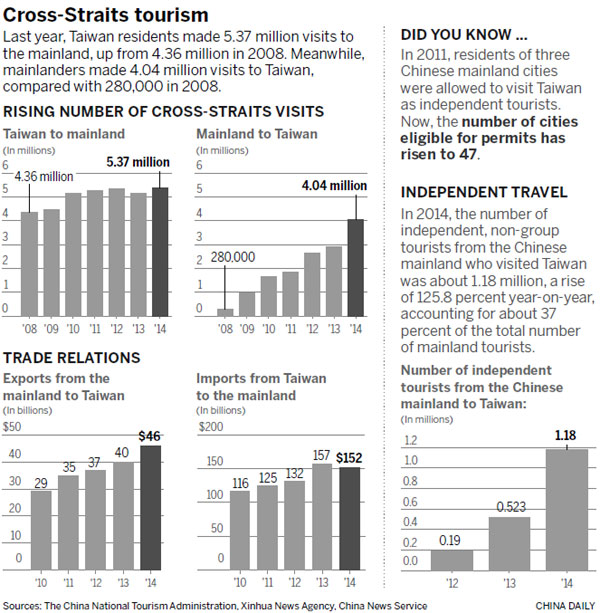
(China Daily 11/03/2015 page5)
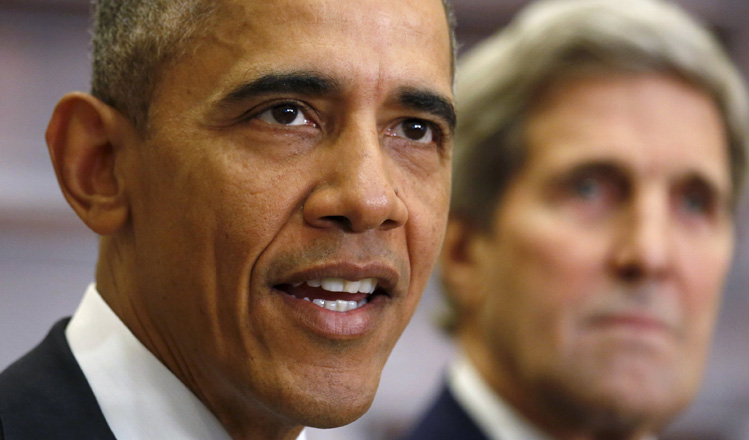
 Obama launches Facebook page, sends message on climate
Obama launches Facebook page, sends message on climate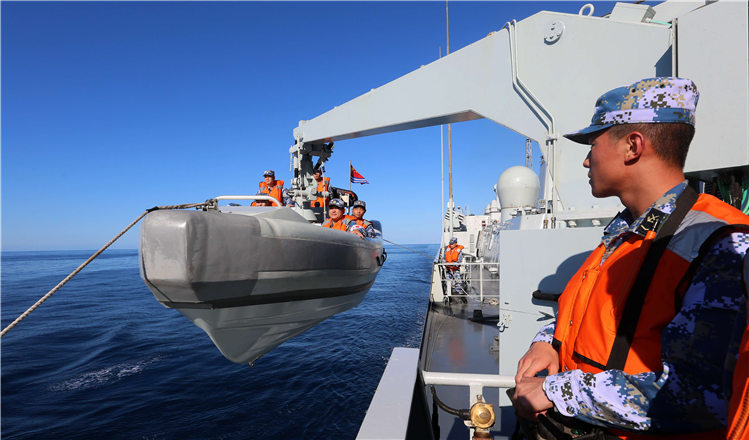
 Washington 'showing anxiety in stance adopted toward Beijing'
Washington 'showing anxiety in stance adopted toward Beijing'
 Tug of war
Tug of war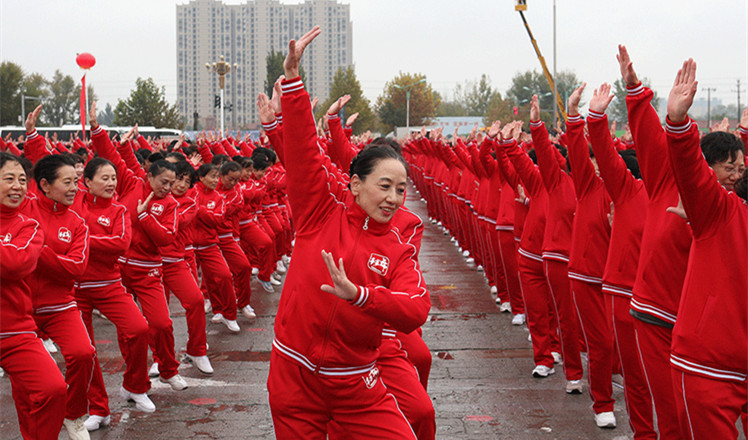
 Stepping into the record books
Stepping into the record books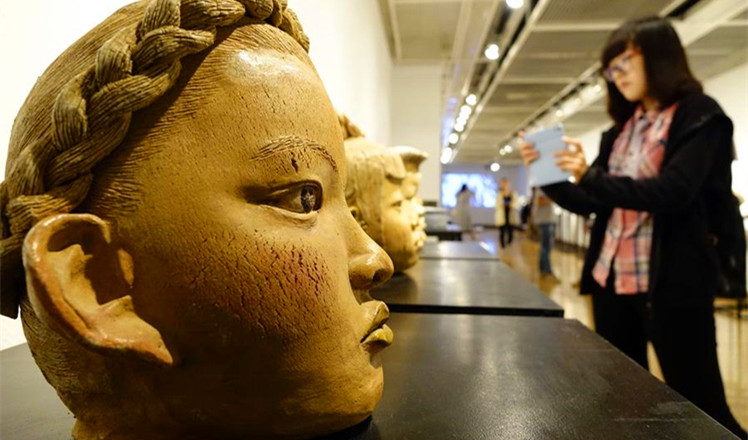
 Contemporary Asian ceramic art shines in Hangzhou
Contemporary Asian ceramic art shines in Hangzhou
 Top 10 most innovative companies in the world
Top 10 most innovative companies in the world
 Spanish-made human tower wows Shanghai audience
Spanish-made human tower wows Shanghai audience
 The world in photos: Nov 2-8
The world in photos: Nov 2-8
Most Viewed
Editor's Picks

|

|

|

|

|

|
Today's Top News
China, not Canada, is top US trade partner
Tu first Chinese to win Nobel Prize in Medicine
Huntsman says Sino-US relationship needs common goals
Xi pledges $2 billion to help developing countries
Young people from US look forward to Xi's state visit: Survey
US to accept more refugees than planned
Li calls on State-owned firms to tap more global markets
Apple's iOS App Store suffers first major attack
US Weekly

|

|
